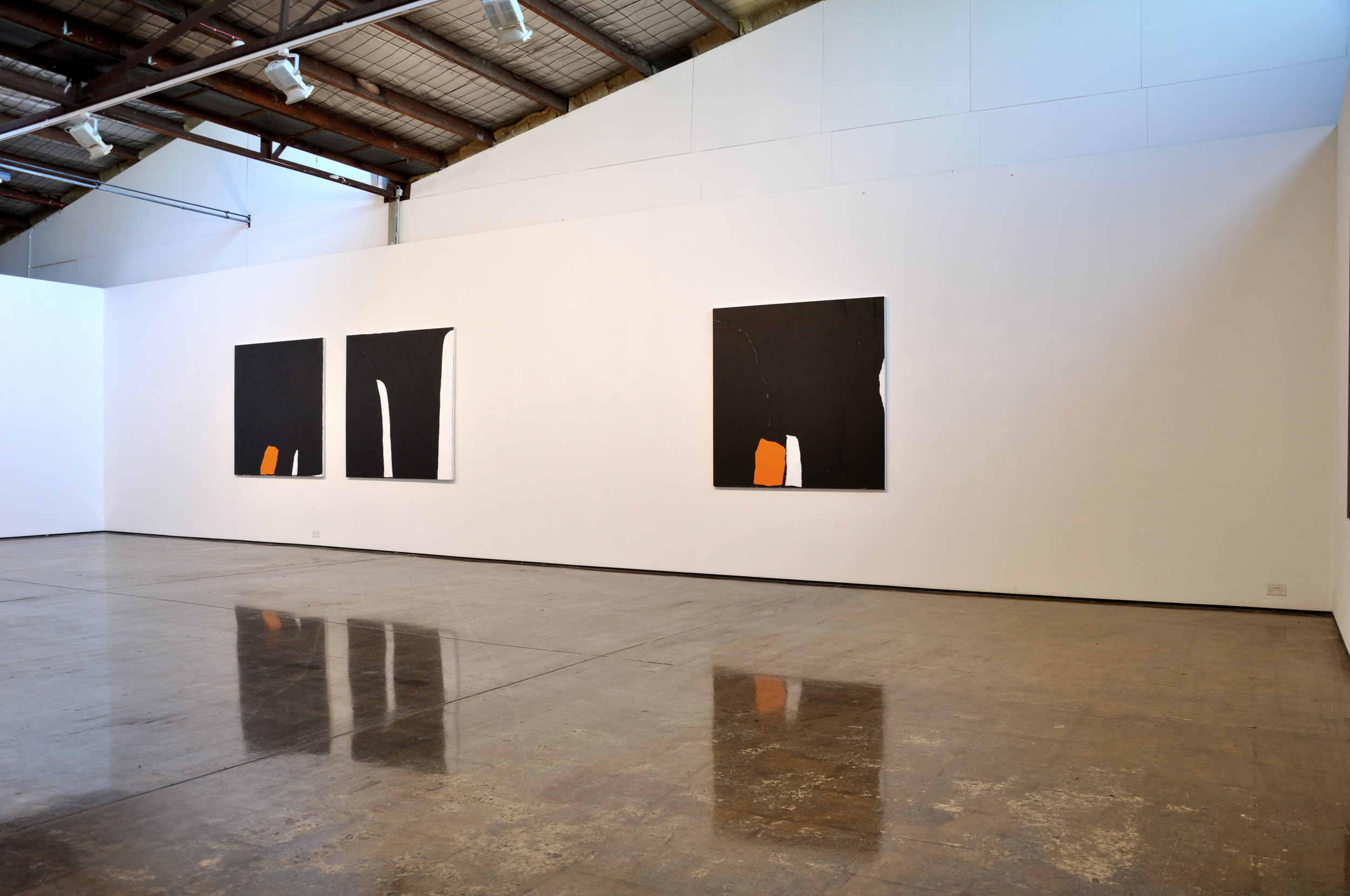

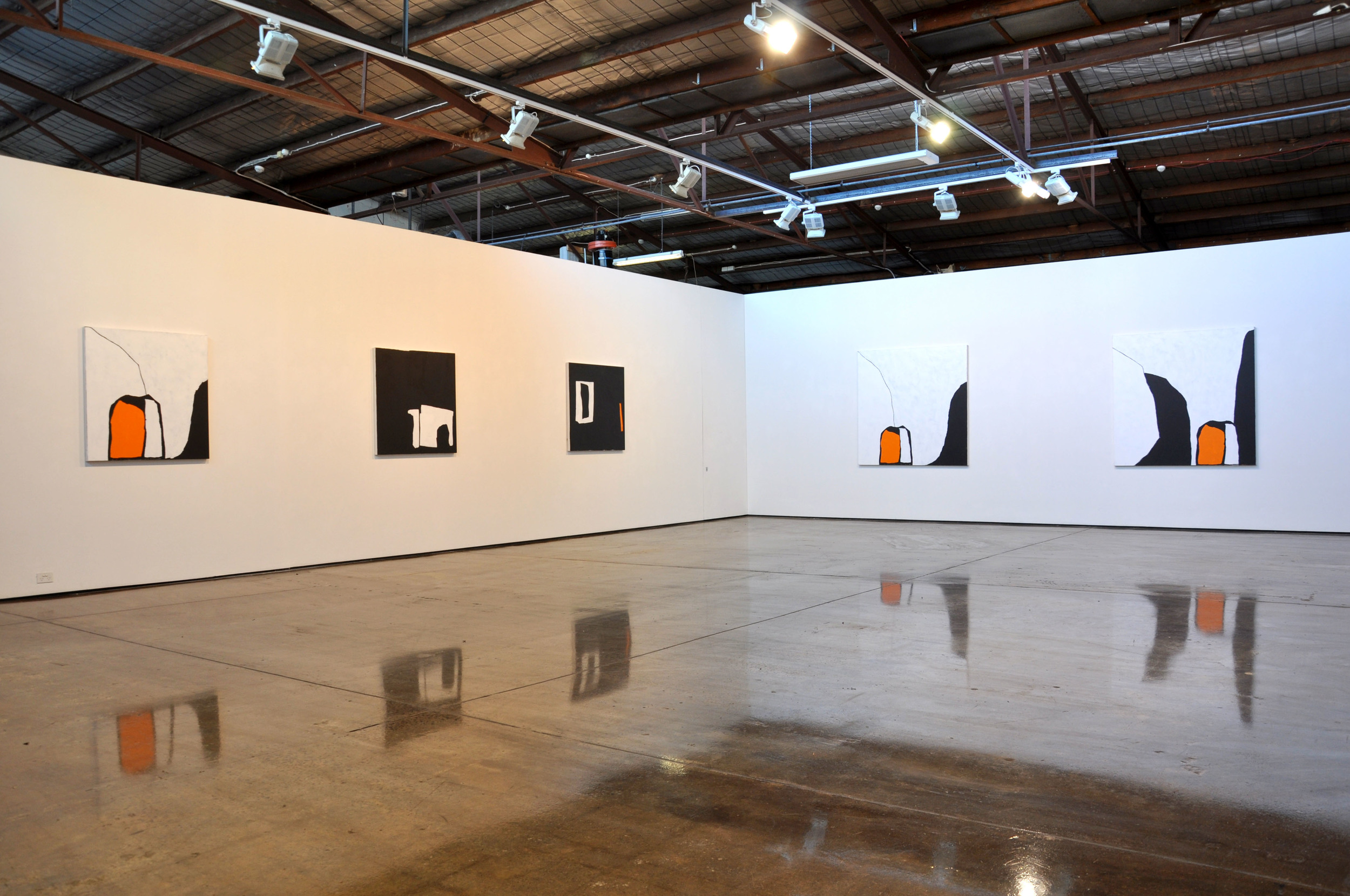
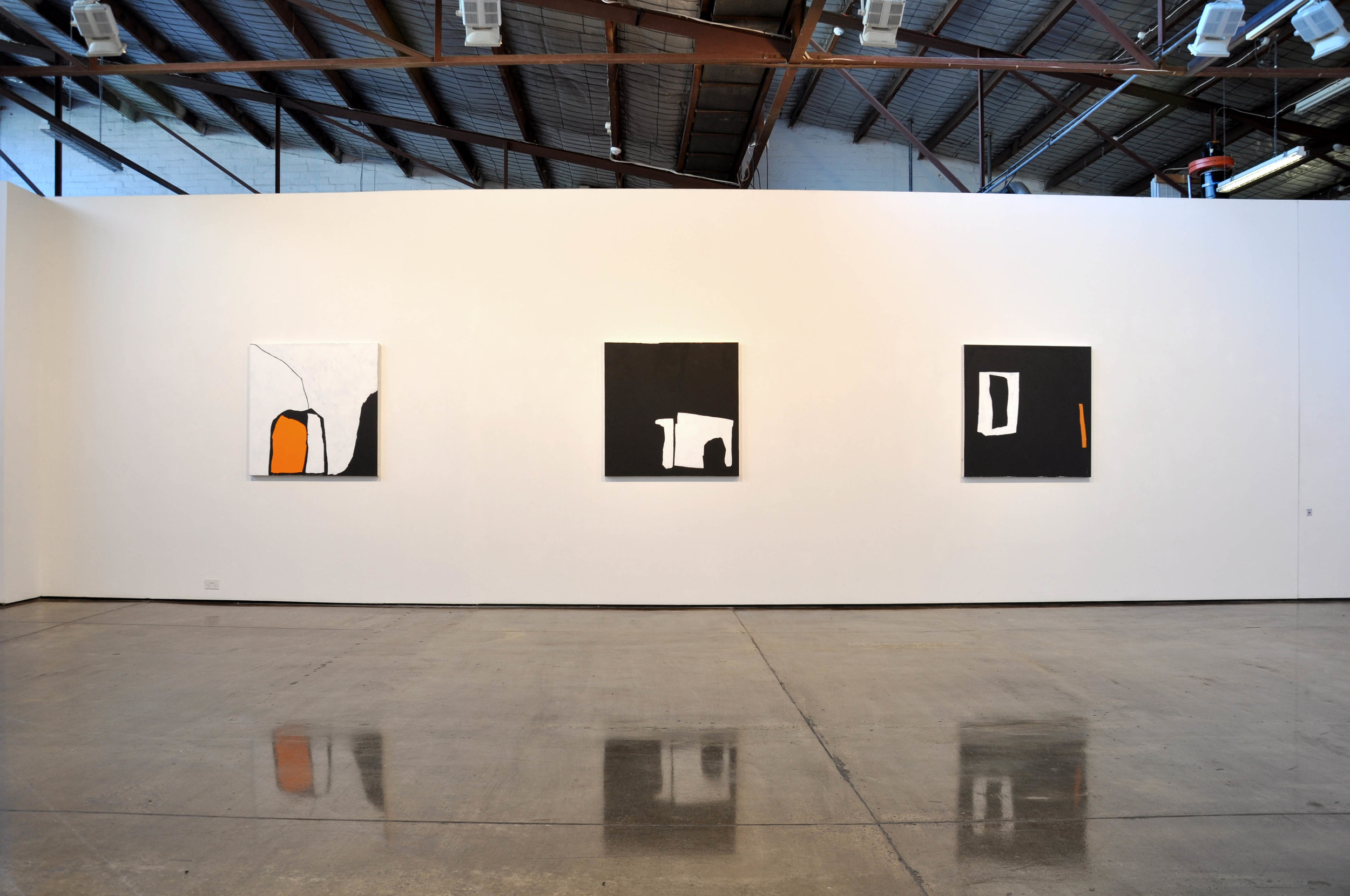
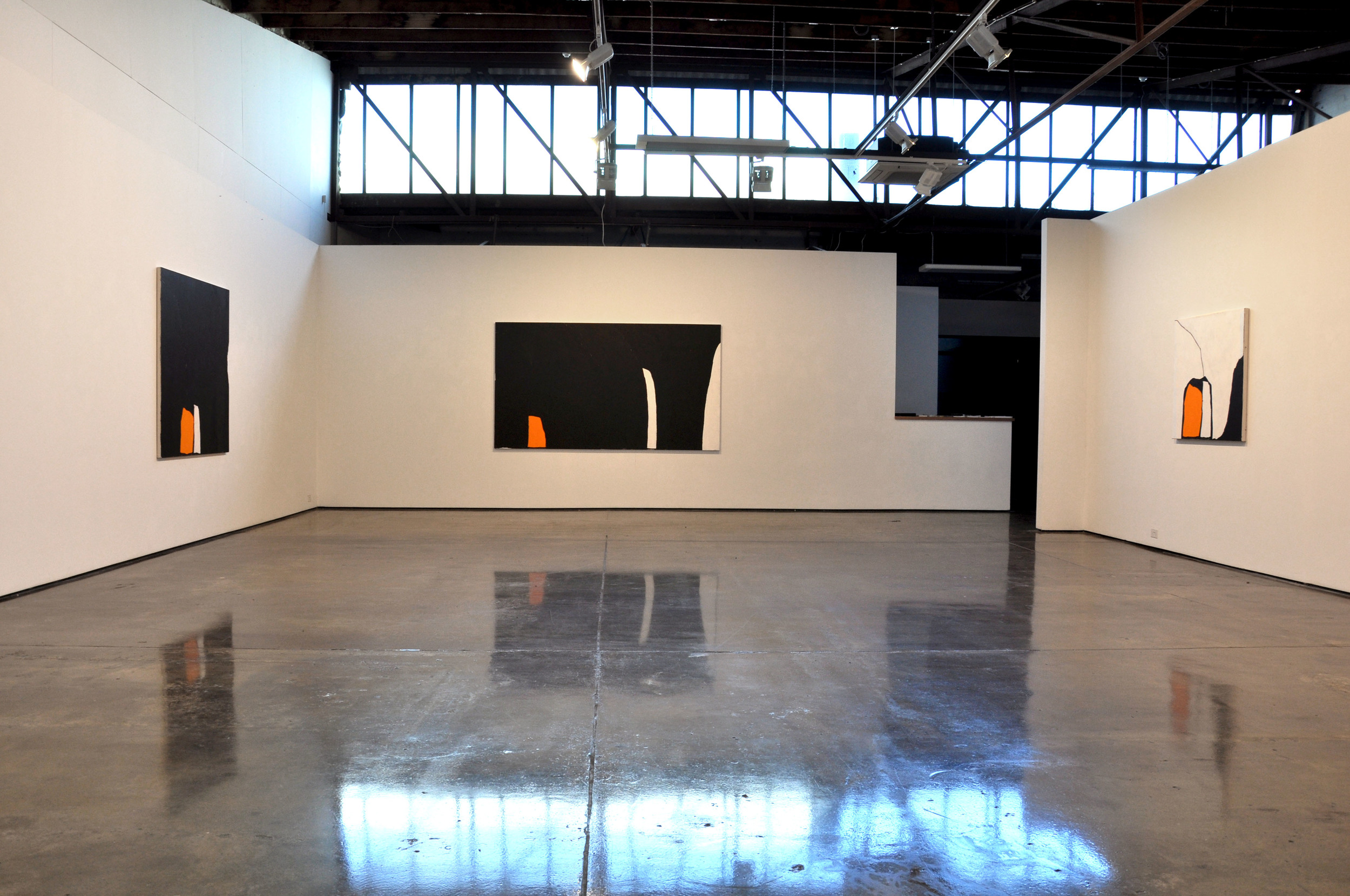
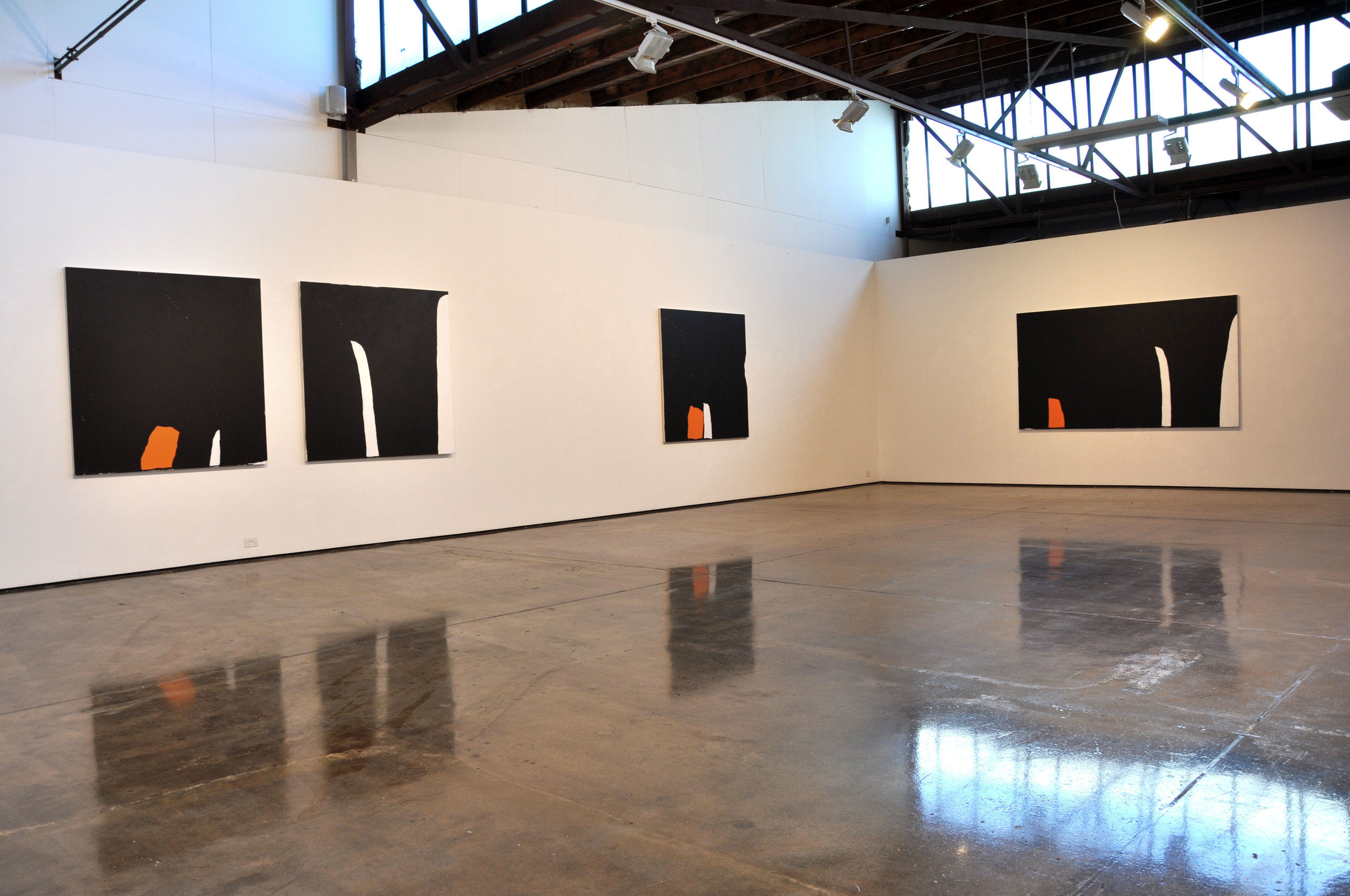
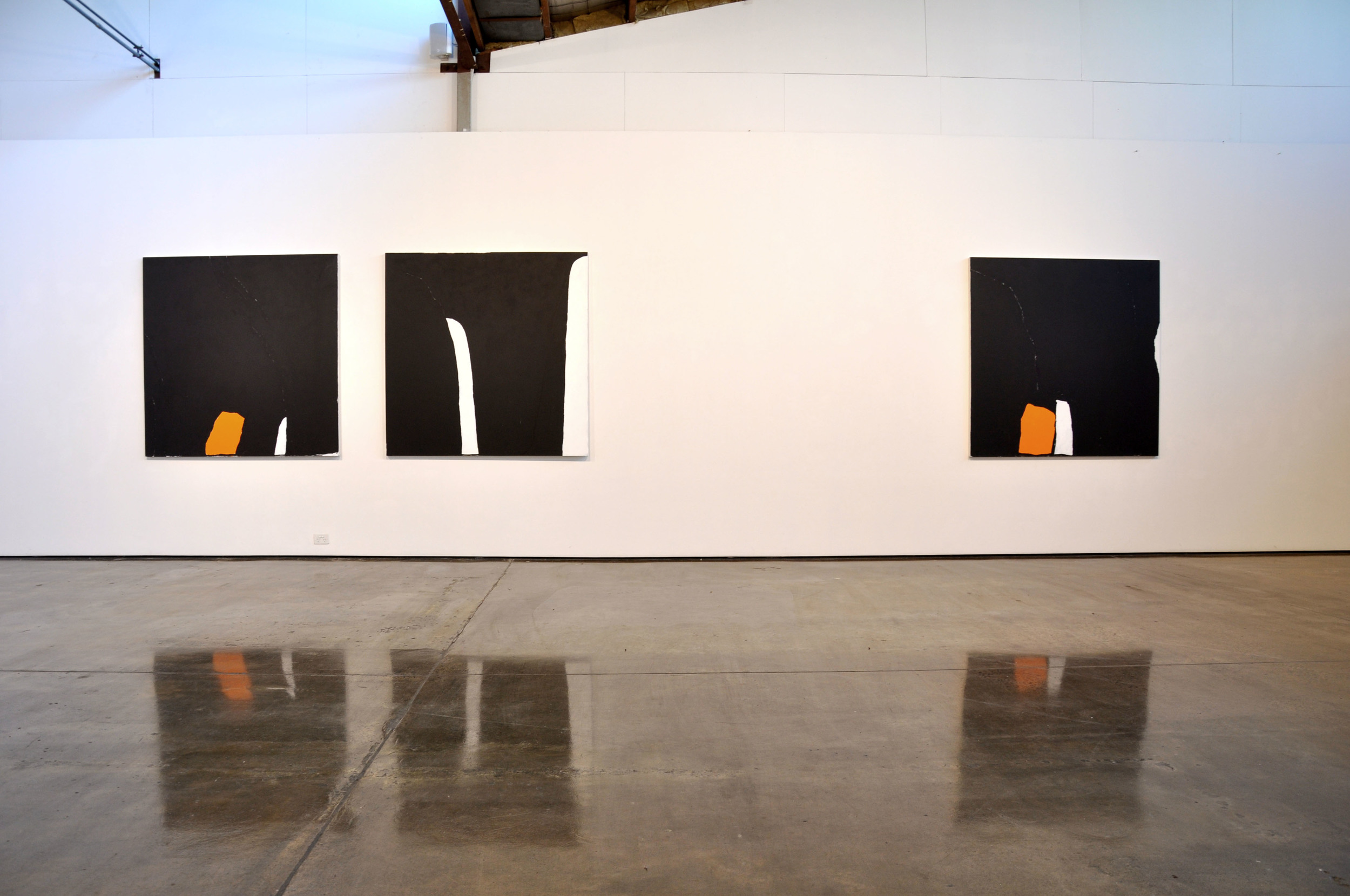
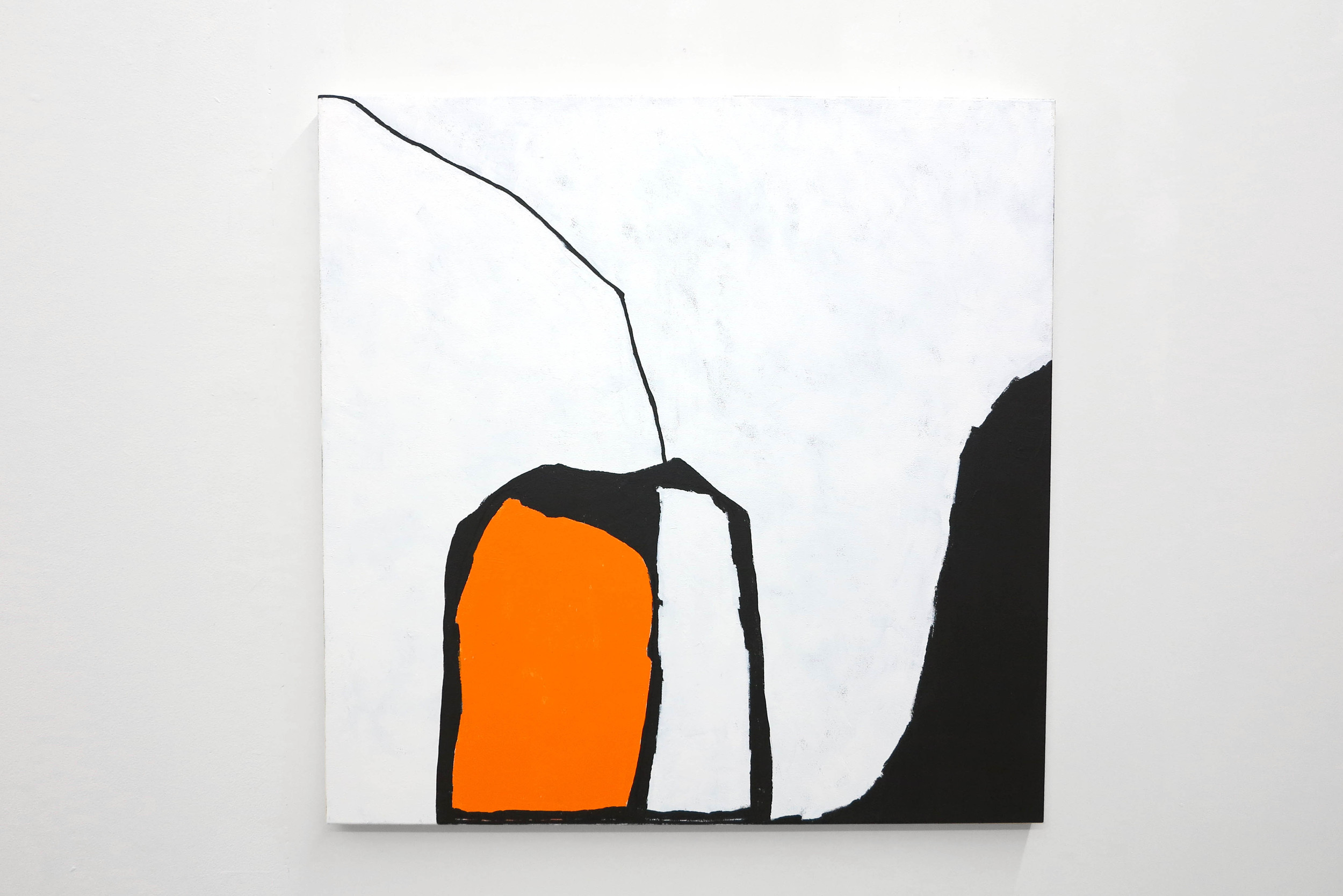
Hints of things we know: the paintings of Hayley Megan French
James Makin Gallery 12 - 28 March 2015
Thinking about what to write about Hayley Megan French’s paintings presented me with a challenging problem and a simultaneous, wonderful, solution. I couldn’t decide which aspect of her work was more important. Was it abstraction? The slowness of those beautiful forms dancing in her work? Was it the landscape, and its fascinating contemporary transformation from colonial hangover (somebody call the art police) to a means of genuine spiritual enlightenment and even, at its best, a way of transcending cultural and historical barriers? Or was it simply French’s painting’s virtuous calm, the marks, the colours, and their satisfying, somehow quiet arrangements? A hard choice, but that is just it. All of these aspects are important, and perhaps that is why I find French’s work so compelling. It operates between moments, between paradigms, between thought and action, and that is exactly why I like looking at them. They refuse to be tethered to one idea.
I had a beautiful moment with one of French’s paintings while viewing the works that would make up the exhibition at James Makin Gallery. When she told me that the work in question was more figurative than she would have liked, I couldn’t help but smile, as I suddenly recognised two characters that had been appearing in her work for some time. Not that they are ever the same… two lumps, one titanium white and one cadmium orange, seemingly locked in conversation (or silence) for eternity. Mind you, they’re never the same size or shape. At best, they may resemble a wobbly Philip Guston character, or even Gumby and Goo (if you were being particularly fanciful), but they’re not what you would call human. They’re lumps, or rocks, or matter. It doesn’t matter.
I have always maintained that the best abstraction still incorporates some form within, hints of things we know, or understand, even if we cannot quite decide exactly what that may be. The idea that abstraction is completely divorced from representation, at least when the human hand is still present in its execution, is patently absurd. Every scrape and stroke and squib is evidence of our clumsy, ridiculous, wonderful bodies’ movements. In terms of describing the way our bodies actually move and work, I have never found anything more satisfying than dance (completely alien to my existence, but just as bewitching), drawing and painting. If you took the flawed, human aspect out of these art forms, you would have… what? Emptiness, or something close to it.
And this leads me back to trying to talk about space. French’s forms are always locked in conversation or engaging in silence (which is a kind of conversation itself), shapes in fields of darkness. Even the darkness in these paintings has character. Lines emerge from the inky darkness, almost impenetrable in deep purples, almost obsidian in their impenetrability. I had to laugh at the sheer cuteness of it. I mean, these guys were deep in conversation, something that could potentially occur over eons. Not that French’s work is ‘cute’, but transforming these beautifully painted forms in my mind to blobs having a chat in the desert over the millennia does appeal to me. Literal philosopher stones. There is something reassuring about the idea that there are rocks in the desert that have stood there for thousands of years, and will remain for thousands more, in a secret, silent conversation.
Also appealing to me is French’s own (very similar) conversation with the art around her. French’s dialogue reaches in equal parts into Indigenous art and European art. Nonggirrnga Marawilli is just as influential as Matisse, and aspects of both artists come through. There has been a politically-charged discourse around Aboriginal art in recent years, with some artists appearing to fan the flames with apparent cash-ins and cynical rip-offs, claiming the sanctity of satire or postmodernism as their get-out-of-art-jail-free-card. French has no need for any such gimmicks, for her investigation has been thorough, and respectful.
Finally, I realise that trying to evaluate French’s work in terms of some kind of theoretical or historical underpinning is really just selling the work short, riffing on my own art school jive talk. Not that these ideas aren’t important to her paintings. They are relevant to the work, but that’s not all they’re about, not by a long shot, and for that I am glad. They ask us so many questions, just as many as we have for them. Maybe the answers are all in there, in the work, staring right back at us. But this is all a part of the conversation we can now have with this work. This silent, beautiful conversation.
Jonathan McBurnie, 2015